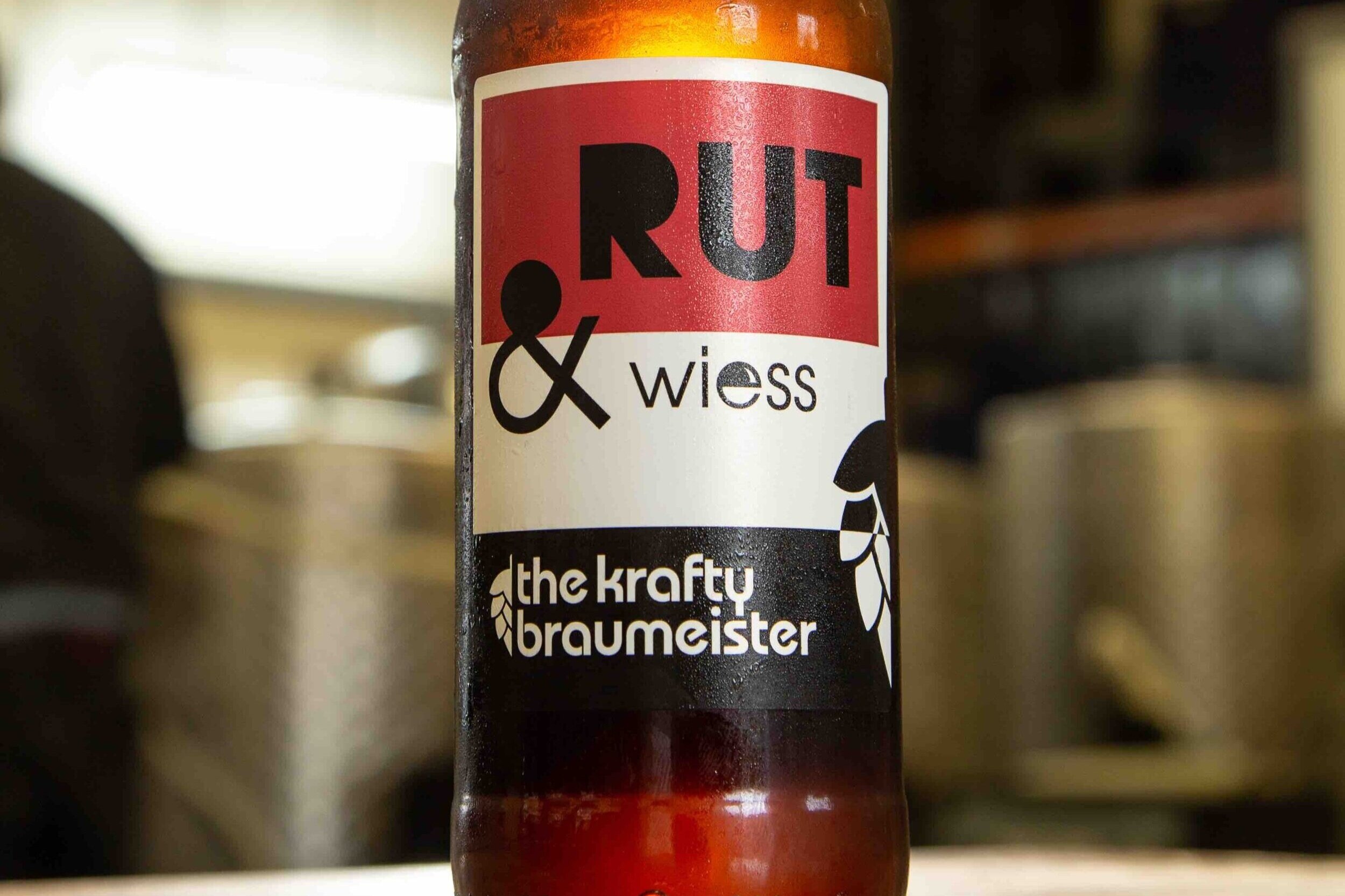Old style beer from Cologne
REPLACE IMAGE WITH FILM!
Kölsch
Wiess, Köln, Cologne-style, Hybrid beer
Golden Oldie.
Pronunciation guide for English-speakers: "Cœllsh" (pronounce the "ö" like a French "œ" as in bœuf).
Quote taken from the German Beer Institute.
Rut&Wiess
The modern beer known as Kölsch is a clear, filtered beer. However, only 100 years ago Kölsch was cloudy and unfiltered. At that time the people of Cologne knew their beer as ‘Wiess’, which translates as ‘white’ in English.
Krafty’s Kölsch-style beer, Rut&Wiess, is brewed in the same tradition. Its cloudiness is generated by the brewing yeast. Unfiltered and non-pasteurised, Krafty’s beer contains all the original flavours and even includes vitamin B.
Rut&Wiess has broad, sweet flavours and a crisp, clean feel at the same time. Its subtle flavours and moderate alcohol make this style a great session beer. Rut&Wiess is brewed with approx. 80% barley malt and approx. 20% wheat malt. The hops used are German Magnum and Saphir.
The name Rut&Wiess comes from the colours of the coat of arms of the city of Cologne. Rut&Wiess simply translates as ‘Red&White’.
Is it a Pale Ale?
Here is an excerpt from a blog written by beer historian and blogger Ron Pattinson about the beers from Cologne:
“German top-fermented beers have their own, very long history. One that is pretty well totally independent of British top-fermenting beers. By calling them "Ales" a false connection is made. It's not only inaccurate, but highly misleading.
Lagerbier has a couple of meanings in German. Here they are:
1. Beer which has undergone lagering, i.e. a long period of cold storage where the temperature is gradually reduced to around 0º C.
2. A bottom-fermenting beer of around 12º Plato
Kölsch obviously falls into the first category. The primary fermentation is with a top-fermenting yeast, but it's then lagered at low temperature, pretty much exactly like bottom-fermenting beer should be.
There's a reason why they produced top-fermenting Lagerbier in Cologne: their Reinheitsgebot. No, it's not the Bavarian Reinheitsgebot. Cologne had a quite different law. There it was forbidden to brew bottom-fermenting beer. If you wanted to produce a Lagerbier - which as the 19th century progressed more and more breweries wanted to - then you had to top-ferment it. But that does not make your beer an ale!” Read the full article here.
How to drink Rut&Wiess
In traditional brewhouses in Cologne the Kölsch is served in Stange, which translates as 'rods' in English,. The glasses are small (o.2cl) to guarantee that you are always drinking fresh beer. Once your glass is empty the Köbes (the waiter) will put a new one in front of you. You don’t have to order! When you drank enough you simply put a beermat on top of the glass and the Köbes will stop delivering.
The agreeable nature of Kölsch means that is goes well with a lot of food. The real challenge is to pick a dish that won't overwhelm it. Simple foods, like cheese and sausage, make great companions for this style of beer.
In traditional Brewhouse restaurants in Cologne people like pair Kölsch with 'Halve Hahn', which translates as half of a chicken. However, it is not a chicken at all! It is a buttered rye bun served with middle-aged Dutch-style gouda cheese, gherkins, sometimes raw onion rings, and a generous portion of mild mustard.

